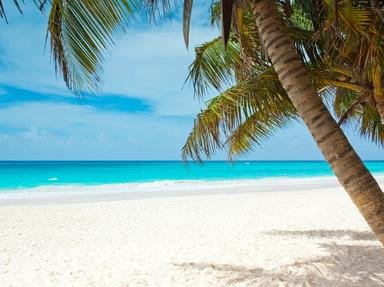Quiz Answer Key and Fun Facts
1. Aruba, a single volcanic island in the Caribbean sea, belongs to which European kingdom which is known for its innovative water-management systems and millions of bicycles?
2. Aruba, together with two other islands that are in close proximity, form a group of islands called the ABC islands. Which islands are the other two?
3. The currency of Aruba is the Aruba Florin. What is unusual about the 50 cent florin?
4. On a clear day, which country, known for having the highest waterfall, can be seen from the south-eastern side of Aruba?
5. Aruba is known for having amazing beaches. One thing tourists rave about is being able to walk on these beaches barefoot, even on very hot days. Why is this?
6. With its low crime rate, warm and welcoming locals, vibrant nightlife and range of leisure activities, Aruba has earned itself a joyous nickname. What is it?
7. What is the name of Aruba's most iconic cocktail? (It sounds like something Speedy Gonzales might enjoy!)
8. One dish that can be found in Aruba is called Keshi Yena, and in fact, this is known as their national dish. What is the base made of, bearing in mind Aruba's Dutch origins?
9. The capital of Aruba, Oranjestad, became the capital in 1824. What does Oranjestad translate to in Dutch?
10. If you visit Aruba for 10 consecutive years in a row, you get a certificate, presented on behalf of the Minister of Tourism.
11. Did the Country of Aruba participate in the Olympic Games after 1988?
12. Cruise ships first started including Aruba on their itineraries over 50 years ago. Is this statement true or false?
13. What are you NOT encouraged to do in Aruba?
14. Aruba's national symbol is called the shoco. An endemic subspecies, what type of animal is a shoco? (You don't have to be too wise to answer this).
15. A certain plant is synonymous with Aruba: it has healing properties (it is particularly useful for sunburn), is known to grow in dry, arid conditions and features on Aruba's coat of arms. What is the plant in question?
Source: Author
heatherlois
This quiz was reviewed by FunTrivia editor
agony before going online.
Any errors found in FunTrivia content are routinely corrected through our feedback system.
